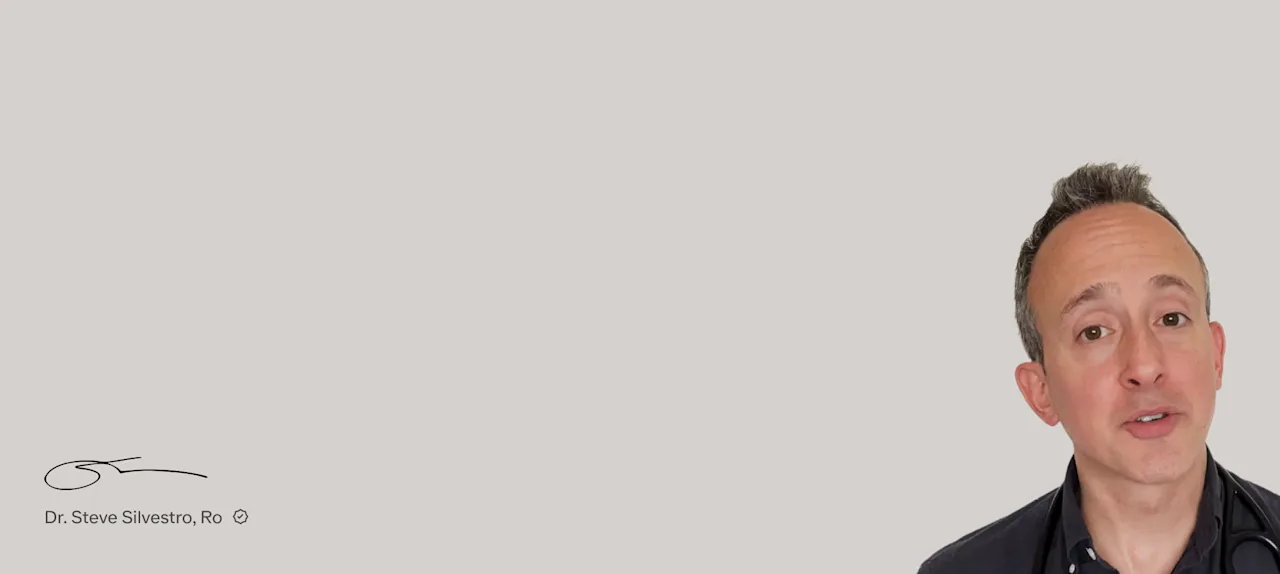Important safety information
What you should know before taking Saxenda.
Saxenda
(liraglutide) injection
FDA-approved medication for weight loss
Lose 9% of your body weight on average in 1 year*
FDA-approved GLP-1 for weight loss
Saxenda is a brand-name version of the generic medication liraglutide. Saxenda is FDA-approved and clinically proven to help with weight loss and belongs to a group of drugs called glucagon-like peptide-1 (GLP-1) receptor agonists. These drugs limit your appetite by acting like a hormone that slows down your gut, making you feel less hungry. People on Saxenda lost an average of 9% of their body weight after one year.*
Saxenda works for weight loss by mimicking the hormone GLP-1, which reduces appetite and slows down the movement of food through your stomach. This may make you feel full longer and therefore eat less, which can lead to weight loss. When paired with healthy food choices and regular exercise, Saxenda can assist you in reaching and maintaining your long-term weight goals.
Saxenda is a clear liquid that comes in prefilled injection pens. Each pen contains multiple doses. If prescribed, you (or someone in your household) will administer the injection once daily under the skin of your stomach, thigh, or arm. You’ll also receive clear instructions on using the injection pen, and your Ro-affiliated provider can offer additional advice.
Safety info: Saxenda treats obesity or overweight (with weight-related problems), along with diet and exercise. Saxenda may have serious side effects, including possible thyroid tumors. Do not use if you or your family have a history of a type of thyroid cancer called MTC or MEN 2. Do not use if you are pregnant. Read more about serious warnings and safety info.
Whether you want to check your insurance coverage or prefer to pay cash, we got you. Once you’re a member, we take care of any paperwork and insurance back-and-forth so you don’t have to lift a finger.
Share your health history and weight loss goals with us online to get started. A Ro-affiliated provider will review your answers and get back to you within a few days. Depending on your health review, a provider may order a metabolic lab test before moving forward with treatment.
After reviewing your results, your provider will determine if you’re eligible for medication. If you are, they’ll tailor a program with prescription treatment best suited to your unique biology.
If you’d like to use insurance, a dedicated team will connect with your insurance company to determine your coverage. If you’d prefer to pay cash or if coverage is denied, we’ll help you understand your options across our full GLP-1 suite. Zepbound vials cannot be purchased with insurance, and are cash pay only.
If you’re paying cash for your medication, it will typically be shipped to you in 1-4 days. If using insurance, you’ll get your prescription from your preferred pharmacy. Medication costs are not included in Ro Body membership pricing.
You’ll have everything you need, including on-demand provider messaging, personalized medication adjustments, and expert guidance on what to expect on your journey – all as part of your membership.
“I started losing weight almost immediately. To me, truly, this has been a game-changer.”
Dr. Pepper Ro Ambassador who inspired the Body Program, after taking GLP-1 medication
“I used to constantly crave food in general. I was always hungry before starting the Body Program.”
Stacie Ro member after taking GLP-1 medication
Meet our experts
Ro offers access to weight loss medications and care customized to your needs and goals.
Ro members taking branded GLP-1 medications were paid for their testimonials.
There are no specific foods you must avoid while taking Saxenda and there are no known food-medication interactions you have to be aware of. That said, some foods and drinks can cause nausea and fullness, which are symptoms similar to Saxenda’s side effects. These same foods—highly processed, sugary and fried foods—may also make weight loss more challenging.
Generally, you’ll want to limit your intake of high-calorie foods like candy, sugary drinks, and fried foods. It also makes sense to eat slowly and eat smaller meals.
The most common side effects of Saxenda often improve within the first few weeks of treatment. Side effects tend to occur when you start the medication or increase the dose. Over time, these side effects should subside once a steady dose is reached.
Some of the most common side effects include:
Nausea
Diarrhea
Constipation
Vomiting
Injection site reactions
Headache
Low blood sugar
Stomach discomfort
Fatigue
Dizziness
Stomach pain
Increased in lipase
Upper abdominal pain
Fever
Inflammation of the gastrointestinal tract
More severe side effects are rarer but possible. Serious side effects include:
Thyroid cancer—The FDA has issued its most serious warning (called a Boxed Warning) that GLP-1 medications like Saxenda may be associated with a type of thyroid cancer called medullary thyroid carcinoma (MTC). So far, this side effect has primarily been seen in laboratory studies using rodents. However, during the post-marketing period, cases of MTC in people treated with liraglutide (the active ingredient in Saxenda and Victoza) have been reported; this data is insufficient to determine the risk in people.
Pancreatitis (inflammation of the pancreas)
Severe hypoglycemia (very low blood sugar)
Kidney and gallbladder problems
Fast heartbeat
Serious allergic reactions
Suicidal thoughts or behaviors
For complete safety information, read more here.
Unused Saxenda injection pens have to be stored in the refrigerator between 36°F and 46°F. After first use, you can either put it back in the refrigerator or keep it at room temperature between 59°F and 86°F. It is important to not freeze Saxenda, because you can’t use it anymore and have to throw away the pen once it has been frozen.
The cost of your Saxenda medication can range depending on your insurance coverage—and we’re here to help with that!
Ro’s insurance concierge will work with your insurance provider to determine coverage for your GLP-1 medication. Please note that this medication is paid for separately from your Ro Body membership, which is only available by cash pay only and does not accept insurance.
Currently, Ro can’t help coordinate coverage for GLP-1 medications for government insurance plans — but depending on your plan, you may still be able to pay out of pocket for certain cash-pay medication options. If you have Federal Employee Health Benefits Program (FEHB), you can join the Ro Body membership and access our insurance concierge.
If your provider orders a metabolic health test, testing at any Quest location is included in the cost of the Ro Body membership. Or you can purchase an at-home blood collection kit through Ro for $75.
If you live in a state where Quest is not available, we’ll automatically send you an at-home collection kit for no charge.
From experts at Ro
Saxenda is a brand-name version of the generic medication liraglutide. Saxenda is FDA-approved and clinically proven to help with weight loss and belongs to a group of drugs called glucagon-like peptide-1 (GLP-1) receptor agonists. These drugs limit your appetite by acting like a hormone that slows down your gut, making you feel less hungry. People on Saxenda lost an average of 9% of their body weight after one year.*
Saxenda works for weight loss by mimicking the hormone GLP-1, which reduces appetite and slows down the movement of food through your stomach. This may make you feel full longer and therefore eat less, which can lead to weight loss. When paired with healthy food choices and regular exercise, Saxenda can assist you in reaching and maintaining your long-term weight goals.
Yes. If appropriate, adults can get Saxenda (liraglutide) through the Body Program. Currently, the Body Program is only available for adults 18 years and older.
Yes, Saxenda is FDA approved for weight loss in adults with a BMI of ≥30 or a BMI of ≥27 and at least one weight-related condition, such as high blood pressure or high cholesterol. Saxenda is supposed to be taken in combination with a reduced-calorie diet and greater physical activity.
Saxenda is a clear liquid that comes in prefilled injection pens. Each pen contains multiple doses. If prescribed, you (or someone in your household) will administer the injection once daily under the skin of your stomach, thigh, or arm. You’ll also receive clear instructions on using the injection pen, and your Ro-affiliated provider can offer additional advice.
Like other GLP-1 medications like Ozempic and Wegovy (active ingredient semaglutide), dosing gradually increases with Saxenda. The typical Saxenda dosing schedule starts with 0.6 mg once daily for one week. After that, your dose will increase each week until you reach the max amount of 3 mg per day, also called the maintenance dose.
Non-diabetic patients who completed the 56-week clinical trial lost an average of 9% of their body weight.
*In a 56-week clinical trial of 3,731 non-diabetic patients with obesity (BMI ≥30) or with overweight (BMI ≥27) and at least one weight-related condition, the 1,812 patients that completed the trial lost an average of 9.2% of their body weight, when Saxenda was paired with a reduced-calorie diet and increased physical activity.









